On This Page:
Both assimilation and accommodation are essential to how organisms build schemas about the world (1952; see also Wadsworth, 2004).
While assimilation deals with keeping existing knowledge and schemas intact and finding a new place to store information, accommodation involves actually changing one’s existing knowledge of a topic (Tan et al., 2017).
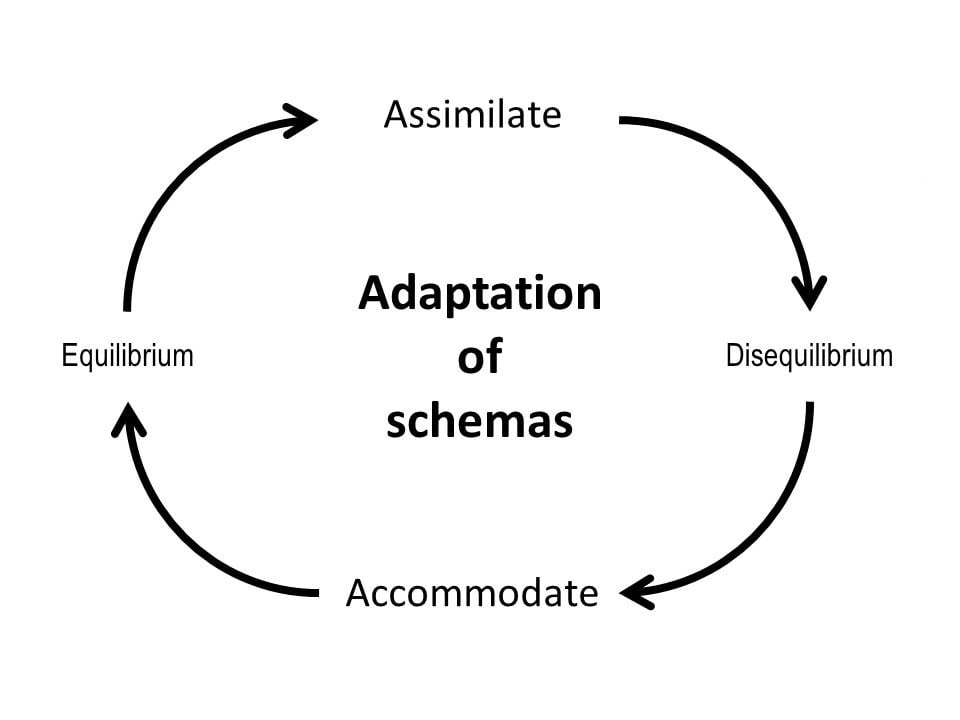
Biological assimilation, according to Piaget, cannot exist without accommodation. If assimilation alone were involved in child development, there would be no variations in the child’s mental structures.
This would mean that the child would not be able to acquire new content and thus would not be able to develop further. Assimilation is necessary as it assures that structures are continuous and that new elements can be integrated into these structures.
Accommodation allows these structures to adapt to individual circumstances.
Schemas
Piaget defined a schema as the mental representation of an associated set of perceptions, ideas, and/or actions. Piaget considered schemata to be the basic building blocks of thinking (Woolfolk, 1987).
A schema can be discrete and specific or sequential and elaborate. For example, a schema may be as specific as recognizing a dog or as elaborate as categorizing different types of dogs.
For example, when a parent reads to a child about dogs, the child constructs a schema about dogs.
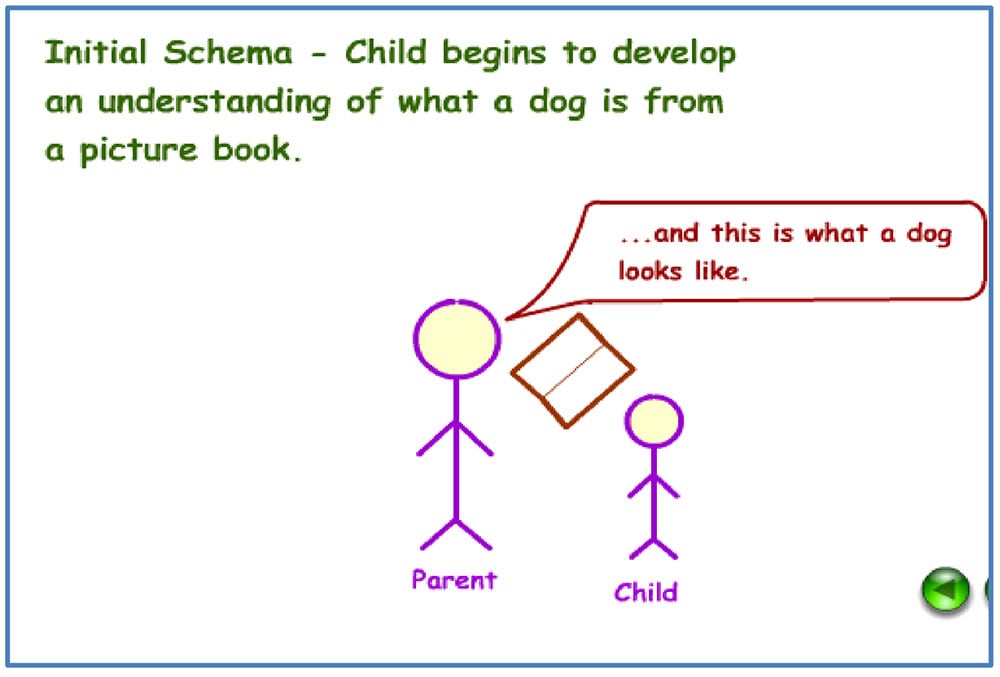
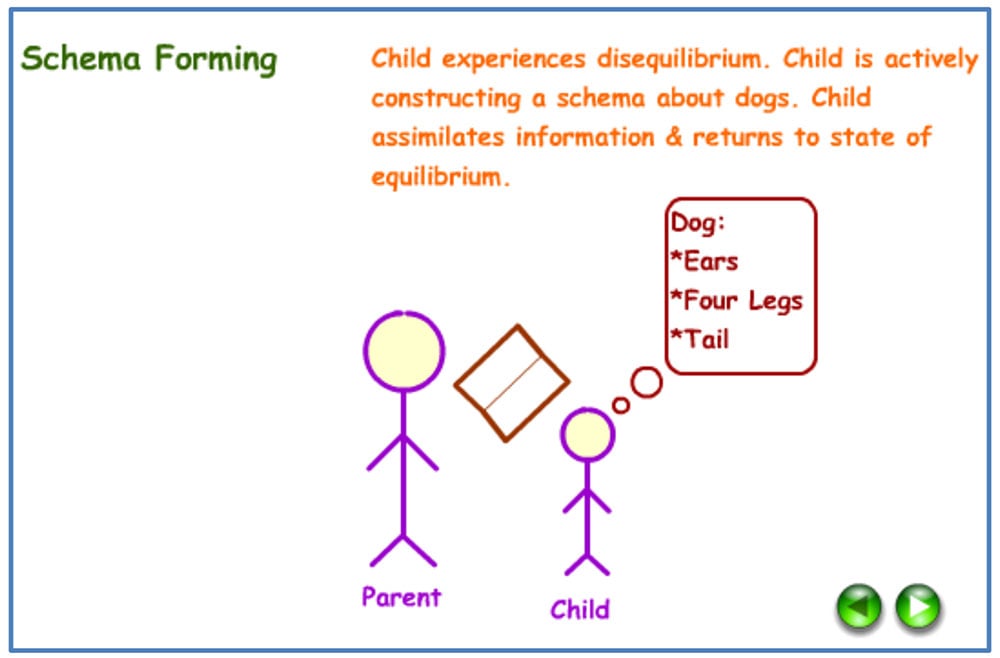
How Assimilation Takes Place
Assimilation is the adjustment of a schema by adding information similar to what is already known.
These pre-existing schemas can either be innate (such as reflexes) or previously acquired (Piaget, 1976).
Later, the child sees a dog in the park; through the process of assimilation the child expands his/her understanding of what a dog is.
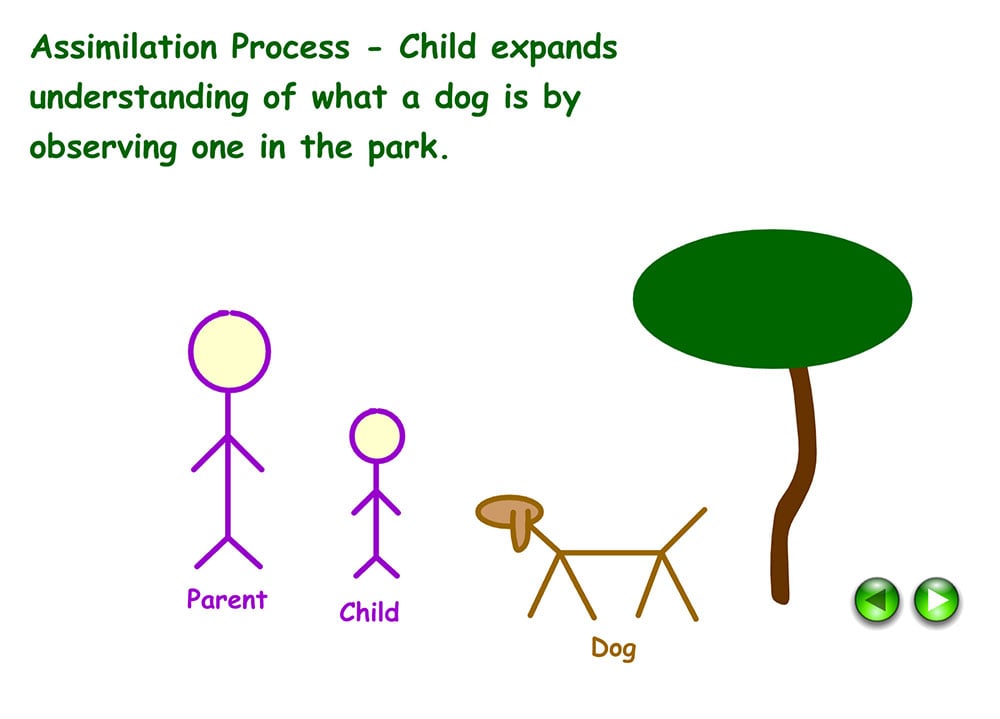
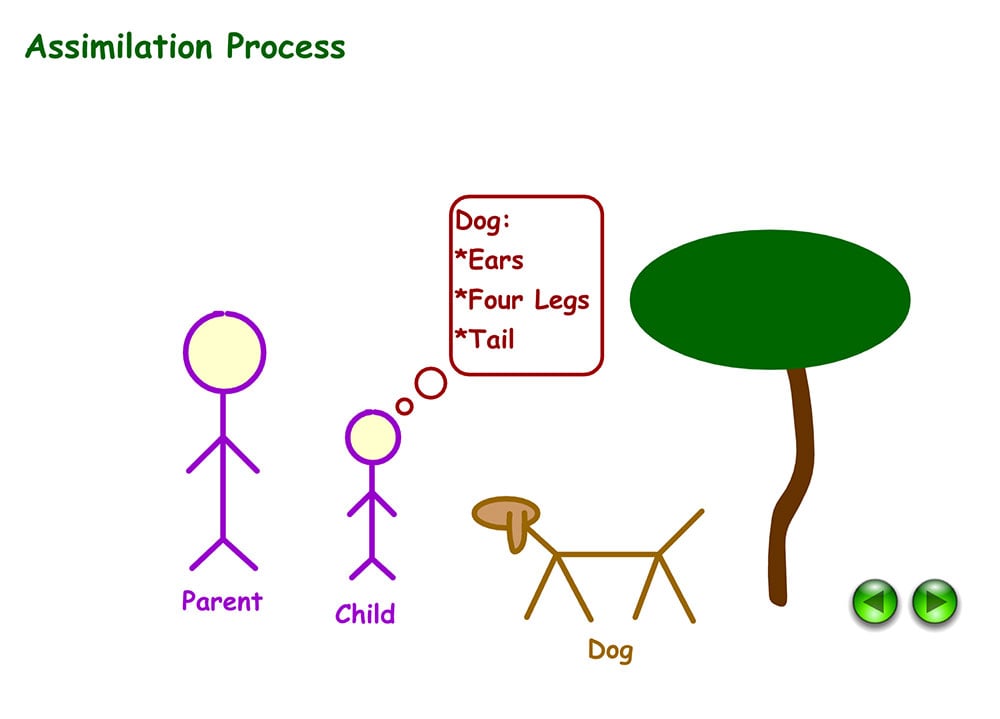
When the dog barks, the child experiences disequilibrum because the child’s schema did not include barking.
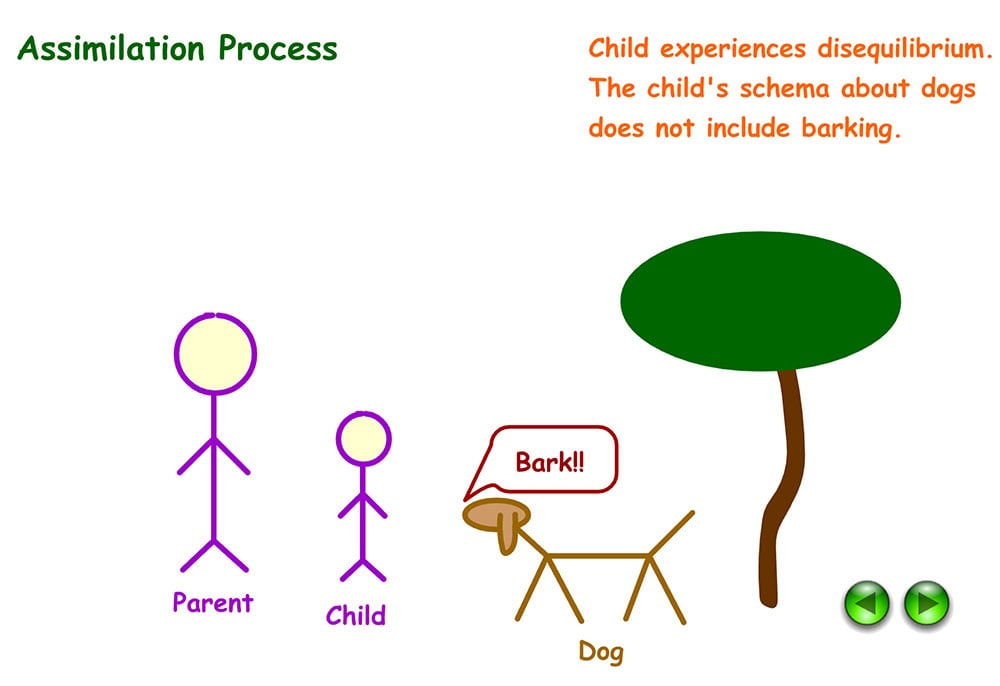
Then the child discovers the dog is furry, and it licks the child’s hand. Again, the child experiences disequilibrium. By adding the newly discovered information to the existing schema the child is actively constructing meaning.

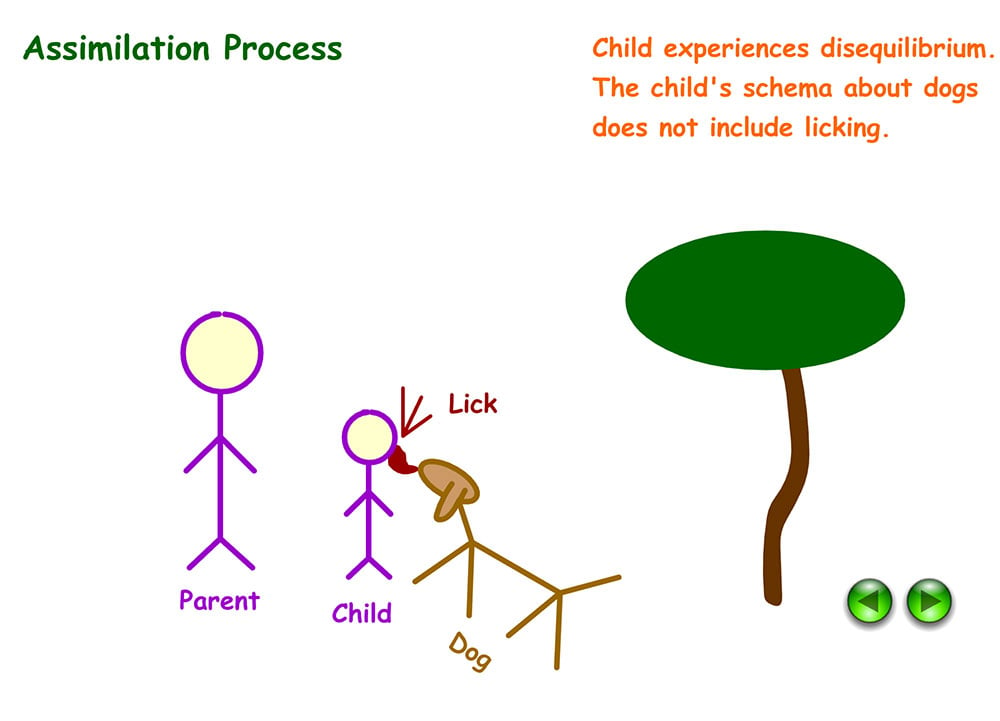
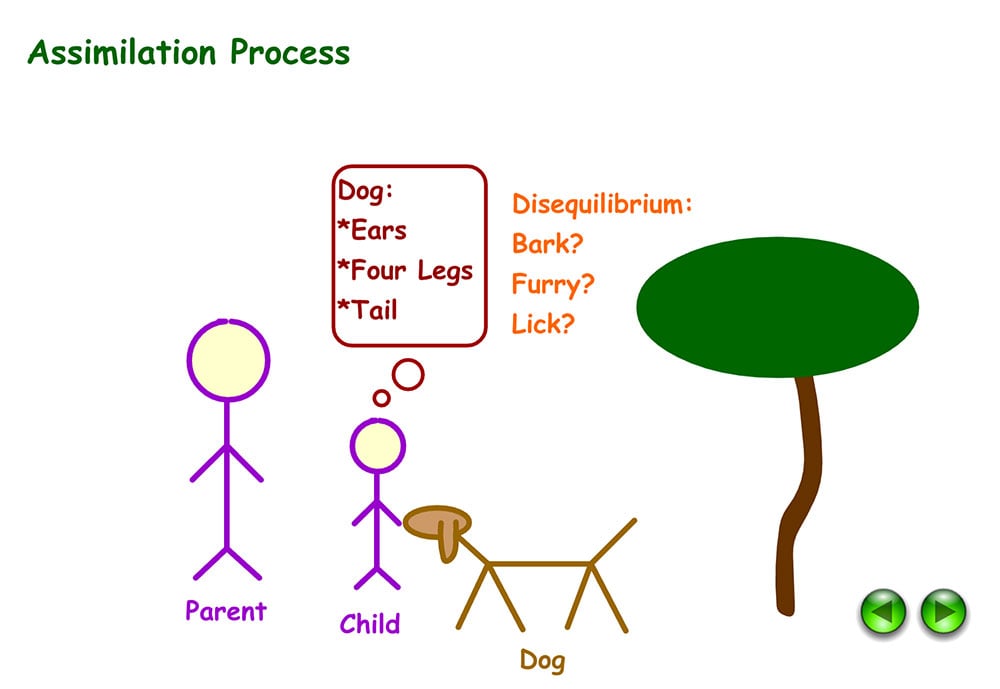
At this point the child seeks reinforcement from the parent. The parent affirms and reinforces the new information. Through assimilation of the new information the child returns to a state of equilibrium.
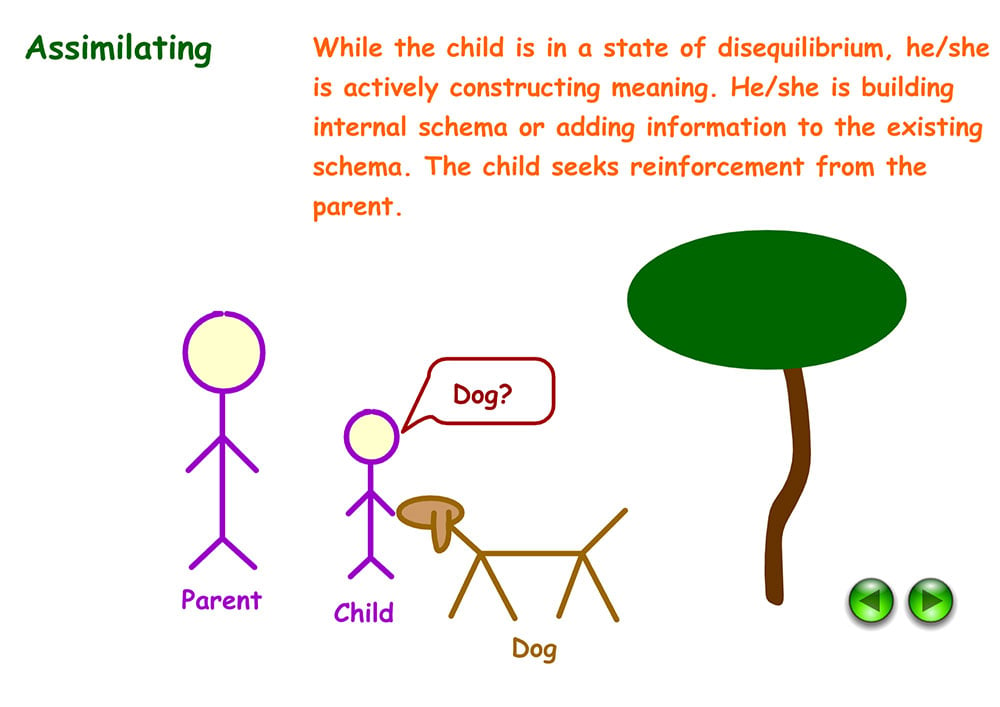
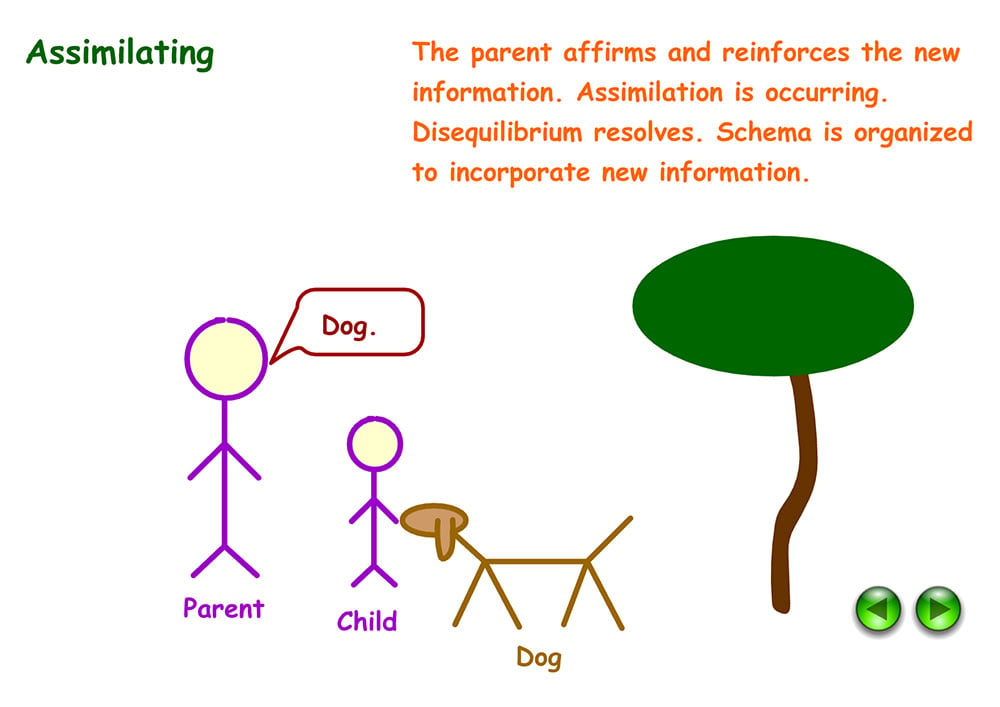
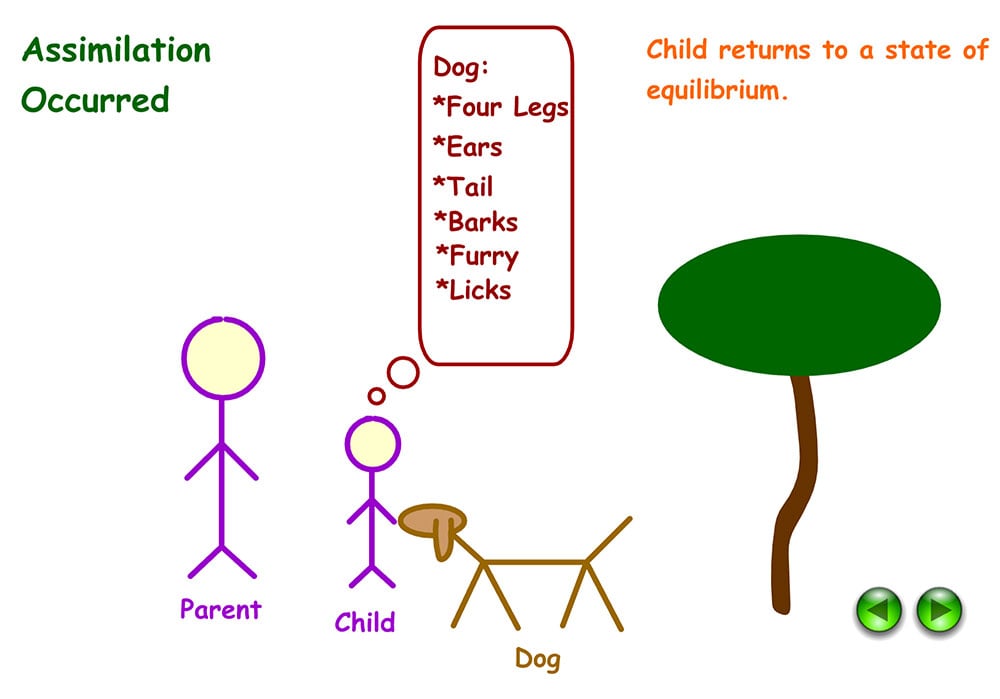
How Accommodation Takes Place
Accommodation is a term generally associated with the developmental theory of Jean Piaget. It refers to adaptation in which a child or adult develops new schema or modifies existing ones to accommodate new information different from what was already known.
This enables a child to better deal with the demands of the environment by constantly changing and updating the mental structures associated with it.
For example, a child with a novel problem may not have the skills to deal with it. By experimenting with the problem, they may find a solution.
In this way, they accommodate the demands of the new problem and develop their existing schema in the process.
The process of accommodation occurs when the child sees a cat in the park.
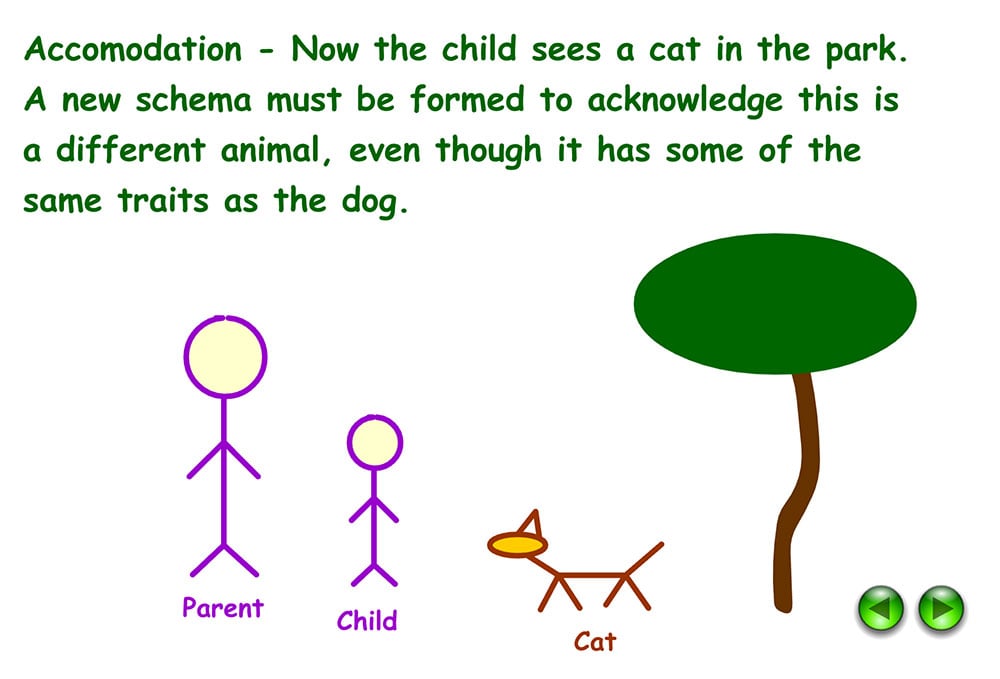
A new schema must be formed, because the cat has many traits of the dog, but because the cat meows and then climbs a tree the child begins to actively construct new meaning.
Again, the parent reinforces that this is a cat to resolve the child’s disequilibrium.
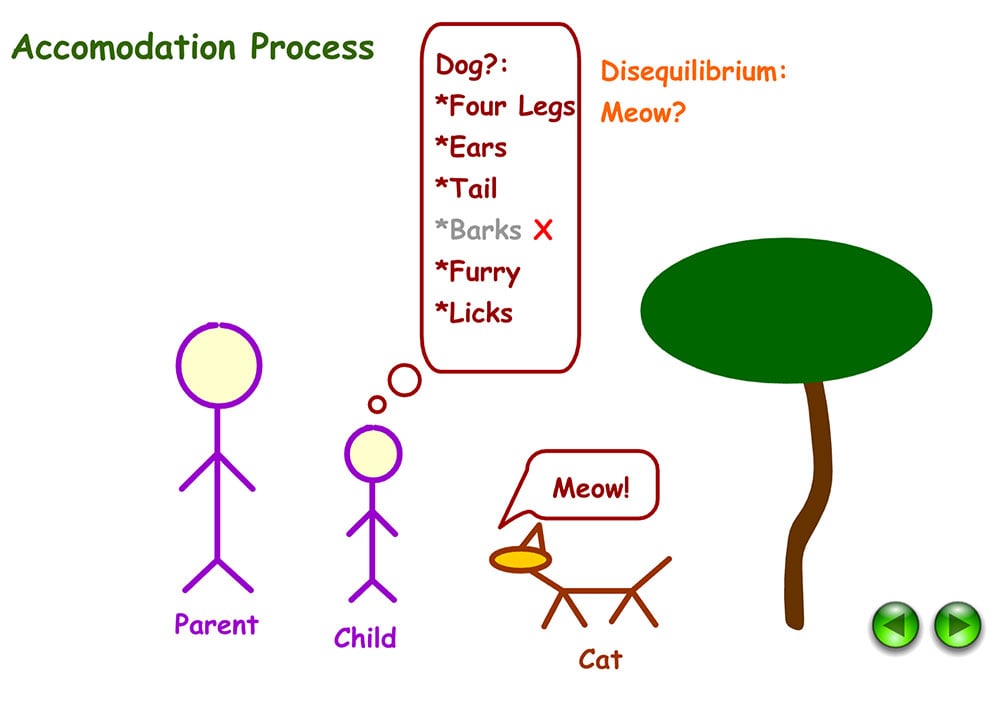
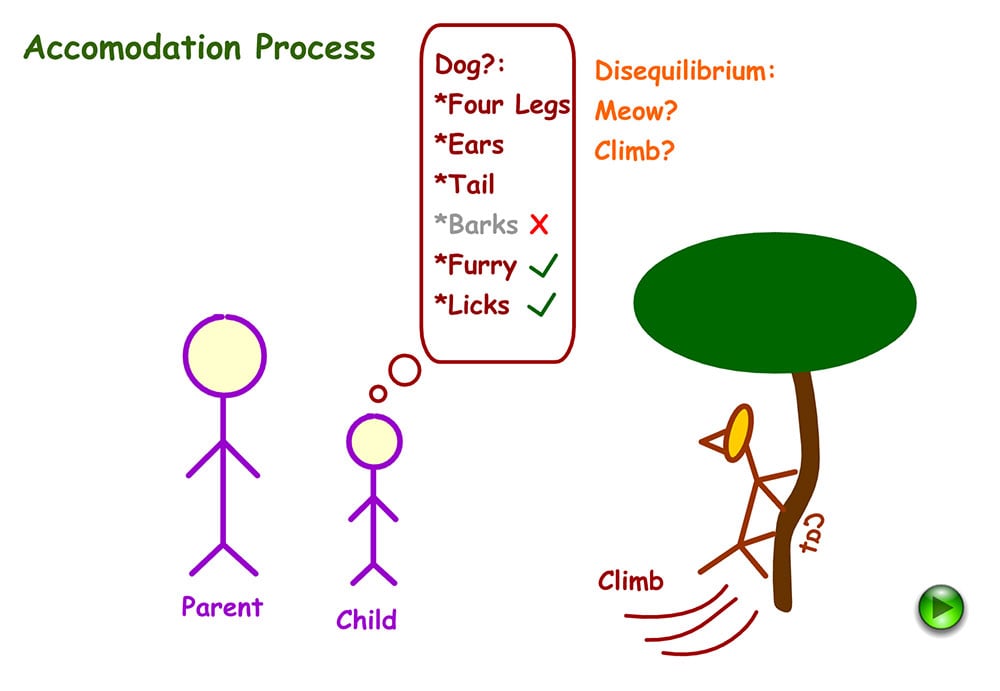
The child is in disequalibrium and is actively constructing meaning. He”she asks the parent to assist in resolving this disequilibrium. At this point the child seeks reinforcement from the parent.
The parent provides feedback and reinforces that this is a cat.
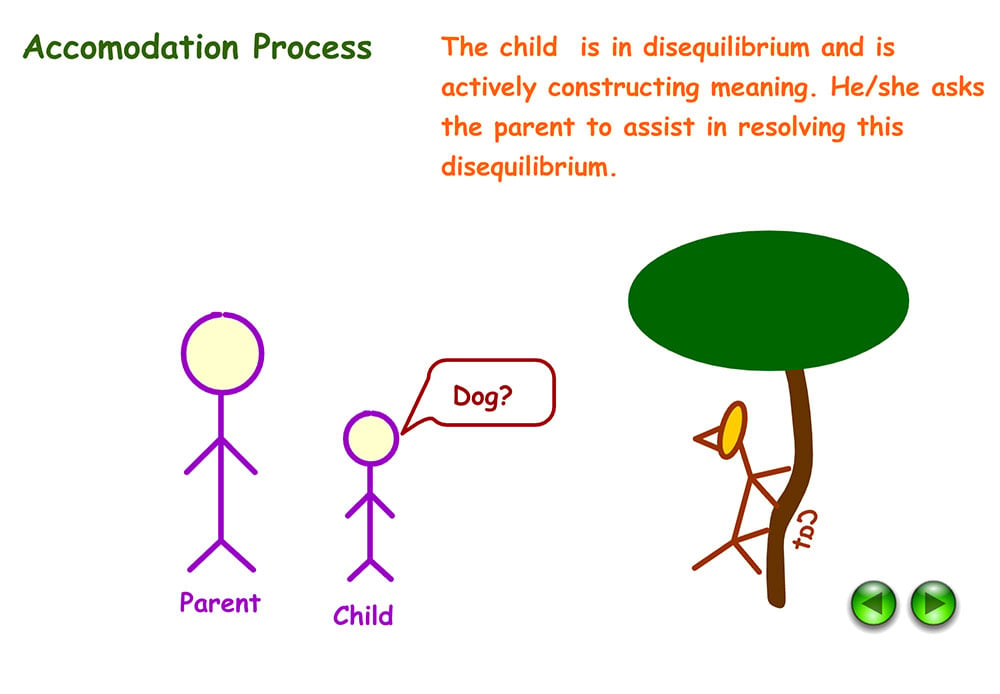
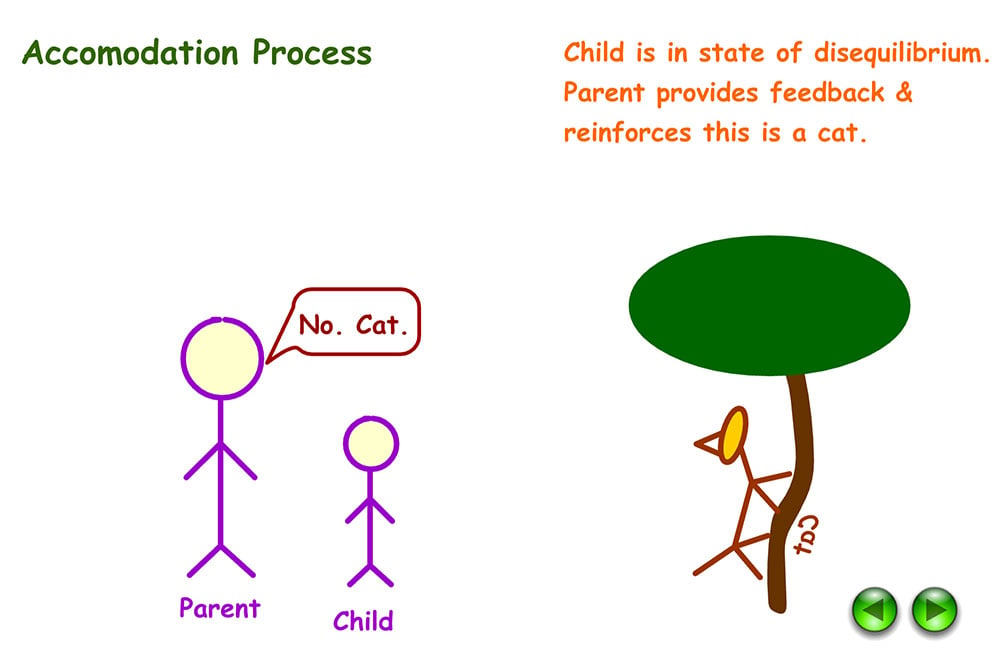
A new schema about cats is then formed and the child returns to a state of equilibrium.
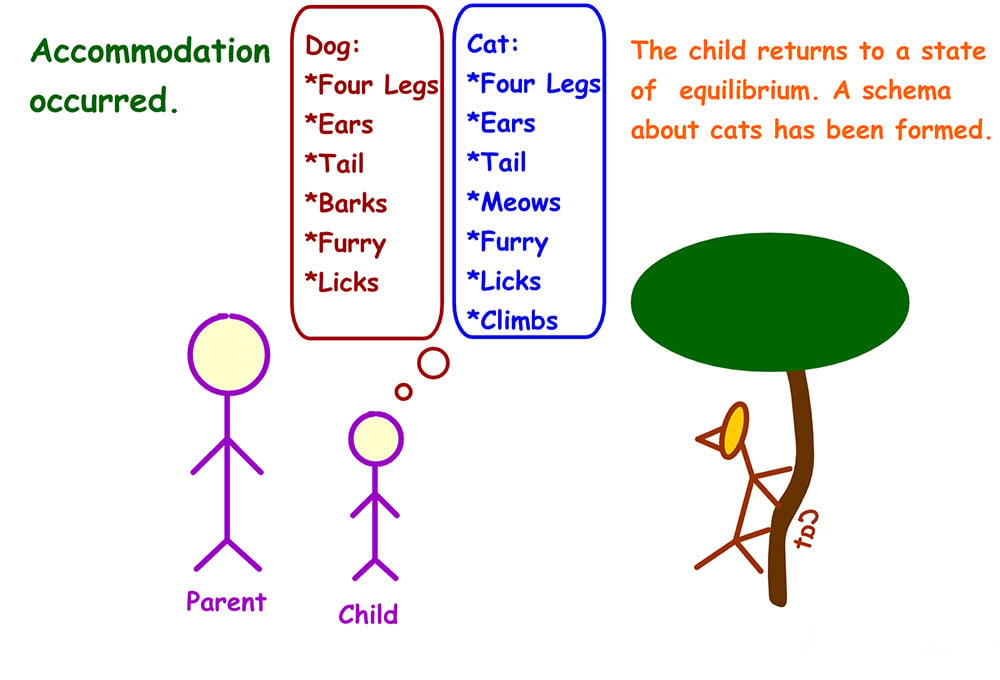
Key Takeaways
- In Piaget’s theory of cognitive development, humans progress through four developmental stages: the sensorimotor stage, the preoperational stage, and the formal operational stage. These stages are facilitated by processes such as accommodation.
- According to Piaget’s theory of cognitive development, organisms gain intelligence through their interactions with objects and are in a continuous process of constructing mental models (schemas) of how the world works from the ever-evolving nature of these interactions.
- The process of accommodation, according to Piaget’s theory, involves altering one’s existing ideas (schemas) about how the world operates in response to new information and experiences. This process of accommodation is universal, applying to children as well as adults.
- The process of accommodation is in tension with that of assimilation. While accommodation seeks to create new schemas, assimilation seeks to relate new information to old cognitive structures (schemas). In order to develop intelligence, organisms must balance accommodation with assimilation.
References
Piaget, J. (1932). The moral judgment of the child. London: Routledge & Kegan Paul.
Piaget, J. (1936). Origins of intelligence in the child. London: Routledge & Kegan Paul.
Piaget, J. (1945). Play, dreams and imitation in childhood. London: Heinemann.
Piaget, J. (1957). Construction of reality in the child. London: Routledge & Kegan Paul.
Piaget, J., & Cook, M. T. (1952). The origins of intelligence in children. New York, NY: International University Press.
Plowden, B. H. P. (1967). Children and their primary schools: A report (Research
and Surveys). London, England: HM Stationery Office.
Siegler, R. S., DeLoache, J. S., & Eisenberg, N. (2003). How children develop . New York: Worth.
Vygotsky, L. S. (1978). Mind in society: The development of higher psychological processes. Cambridge, MA: Harvard University Press.
Wadsworth, B. J. (2004). Piaget’s theory of cognitive and affective development: Foundations of constructivism. New York: Longman.
Wood, K. C., Smith, H., Grossniklaus, D. (2001). Piaget’s Stages of Cognitive Development. In M. Orey (Ed.), Emerging perspectives on learning, teaching, and technology. Retrieved from http://projects.coe.uga.edu/epltt/

